Robustness of Affine Short Rate Models
David Mandel — Florida State University — Department of Mathematics
Feb 25, 2016
Overview
- Global Sensitivity Analysis
- Calibration of Vasicek & CIR Models
- Robustness Results
Methods
- ANOVA Decomposition
- Monte Carlo
- Maximum Likelihood Estimation (MLE)
- Asymptotic Distribution Approximations of MLEs
Robustness
- The ability of tolerating perturbations that might affect the system's functional body.
- System = bond prices implied by interest rate model, perturbations = changes in parameter values.
- Global sensitivity analysis (GSA) to quantify sensitivity to parameters.
Global Sensitivity Analysis
ANOVA Decomposition
For $f \in \mathcal{L}^2[0,1]^d$ and $D := \{1,2,\ldots,d\}$,
$\displaystyle f(x) = \sum_{u \subseteq D} f_u(x_u), \qquad (f_u, f_v) = 0, \, u \neq v$
$\displaystyle \boxed{\sigma^2 = \sum_{u \subseteq D} \sigma_u^2}$
ANOVA Decomposition
$\displaystyle \boxed{\sigma^2 = \sum_{u \subseteq D} \sigma_u^2}$
"First-order effects" $\displaystyle \underline{S}_u := \frac{1}{\sigma^2} \sum_{v \subseteq u} \sigma^2_v$
"Total effects" $\displaystyle \bar{S}_u := \frac{1}{\sigma^2} \sum_{v \cap u \neq \emptyset} \sigma^2_v$
Global Sensitivity Analysis
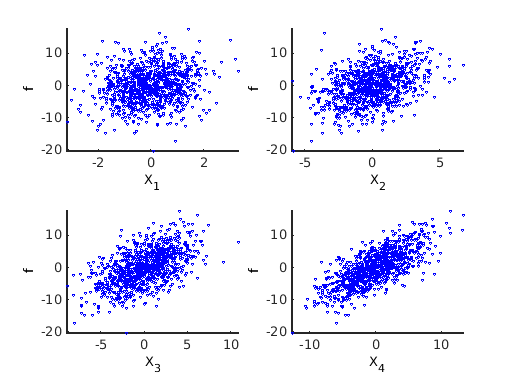
| $\underline{S}_{\{1\}}$ | $\underline{S}_{\{2\}}$ | $\underline{S}_{\{3\}}$ | $\underline{S}_{\{4\}}$ |
|---|---|---|---|
| $0.0331$ | $0.1334$ | $0.2996$ | $0.5331$ |
First-Order Effects
| $\underline{S}_{\{1\}}$ | $\underline{S}_{\{2\}}$ | $\underline{S}_{\{3\}}$ | $\underline{S}_{\{4\}}$ |
|---|---|---|---|
| $0.0331$ | $0.1334$ | $0.2996$ | $0.5331$ |
$\underline{S}_{\{i\}}$ measures the expected fraction of variance to be eliminated if the "true" $X_i$ were known.
Total Effects
- $\bar{S}_{\{i\}}$ takes the first-order effects and all interactions of $X_i$ into account
- If $\bar{S}_{\{i\}} \approx 0$, parameter $i$ has negligible effect - can freeze
- Offers insights into model reduction
Maximum Likelihood Estimation
Maximum Likelihood Estimation
- Assume $X \sim P_\theta$ with joint pdf $f(x; \theta)$, $\theta \in \Theta$
- Likelihood function $$ L(\hat{\theta}_n) := \sup\limits_{\theta \in \Theta} f(x;\theta) $$
- Convergence in distribution $$ \sqrt{n}(\hat{\theta}_n - \theta) \xrightarrow d \mathcal{N}(0,I^{-1}(\theta)) $$
Example - Vasicek Model
- $Q$-dynamics $$ dr_t = a(b - r_t)dt + \sigma dW_t $$
- Implies normal distribution of short rate: $$ r_t \mid r_0 \sim \mathcal{N}\left(r_0e^{-at} + b\left(1 - e^{-at}\right), \frac{\sigma^2}{2b}\left(1 - e^{-2at}\right)\right) $$
- Parameters to be calibrated:
- $a > 0$ = mean reversion speed
- $b > 0$ = long-term mean
- $\sigma > 0$ = volatility
- 2 issues: asymptotic normality and observable data
Vasicek Calibration - Normality
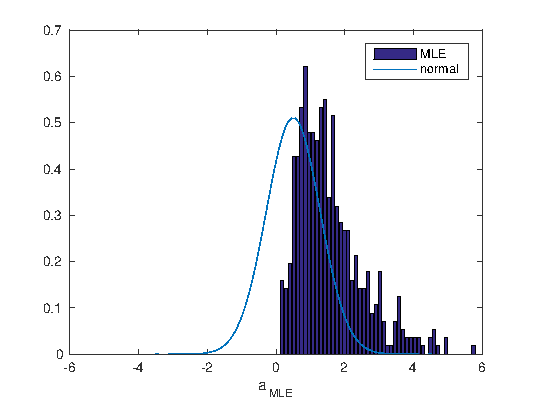
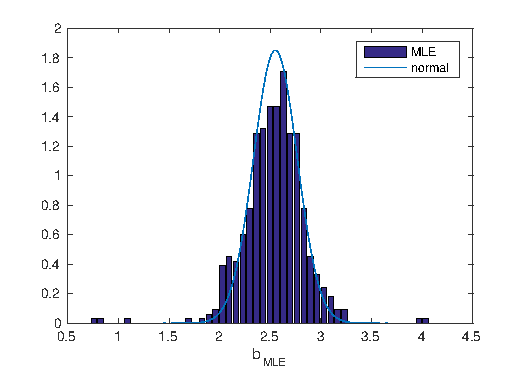
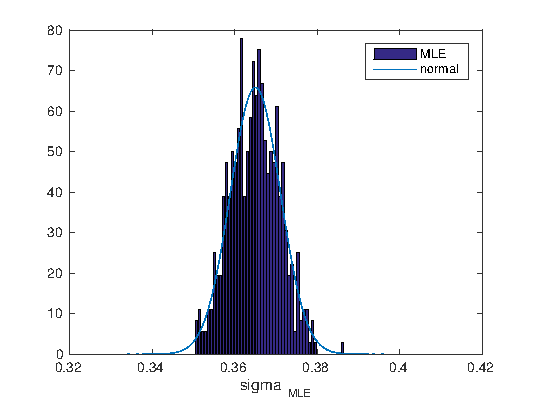
Vasicek Calibration
- Calibrate logarithm of parameters, instead
- Lognormal distribution implied by MLE theory
- Short rate not observable; yields are observable
- Calibration performed to four years of Treasury yields, maturities 1-30 years
- Now have (approximate) distributions of parameters
CIR Model - Same Idea
- $Q$-dynamics $$ dr_t = a(b - r_t)dt + \sigma \sqrt{r_t}dW_t $$
- Implies a noncentral chi-squared distribution of the short rate
- Parameters to be calibrated:
- $a > 0$ = mean reversion speed
- $b > 0$ = long-term mean
- $\sigma > 0$ = volatility
Parameter Distributions
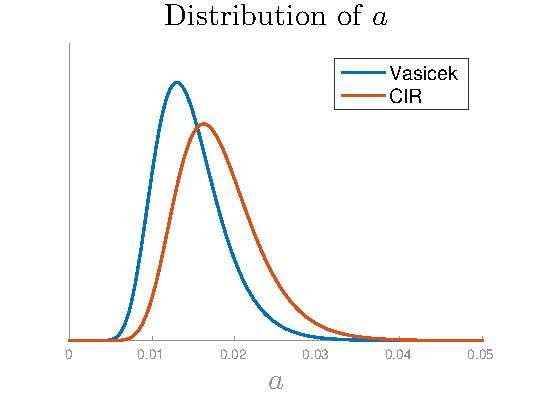
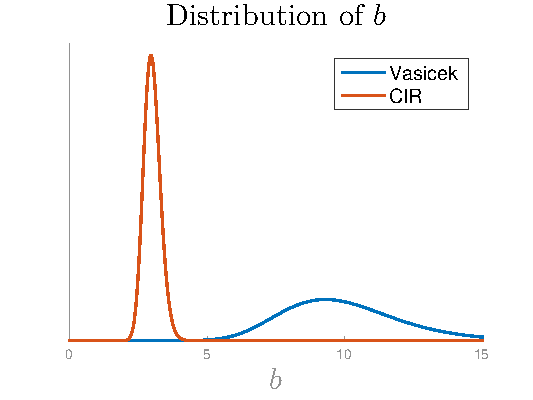
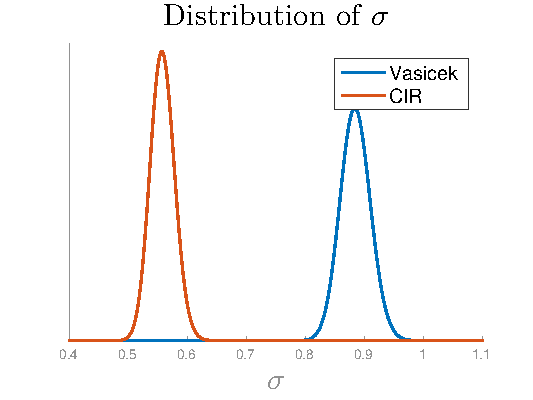
Robustness Results
Closed-Form Bond Price Models
$$ P(t,T) = e^{A(t,T;a,b,\sigma) + B(t,T;a,b,\sigma)r_t}$$
Robustness
- The ability of tolerating perturbations that might affect the system's functional body.
- System = bond prices implies by interest rate model, perturbations = changes in parameter values.
- Global sensitivity analysis (GSA) to quantify sensitivity to parameters.
Sensitivities as Functions of Maturity
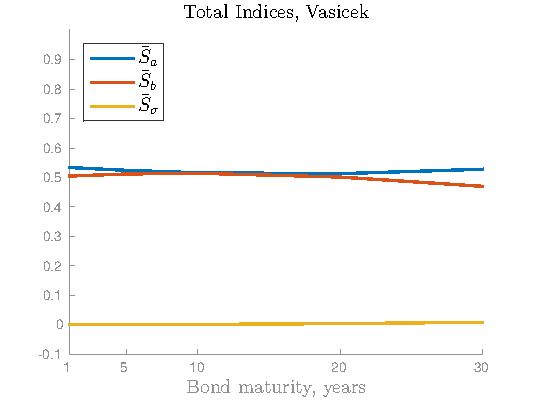
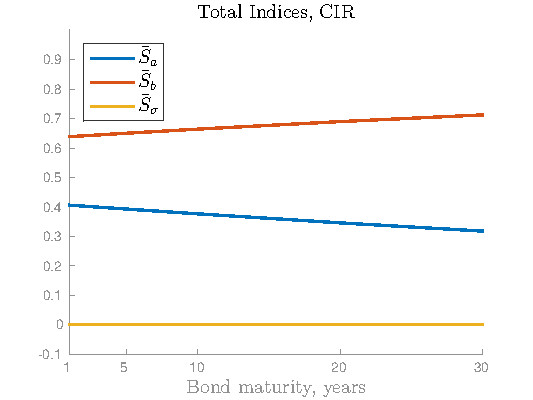
Robustness
- The ability of tolerating perturbations that might affect the system's functional body.
- System = bond prices implied by interest rate model, perturbations = changes in parameter values.
- Global sensitivity analysis (GSA) to quantify sensitivity to parameters.
- MLE-implied parameter distributions don't capture total uncertainty in parameters
- Additional uncertainty because of truncating asymptotic result and model fit error
Sensitivities as Functions of Parameter Uncertainty
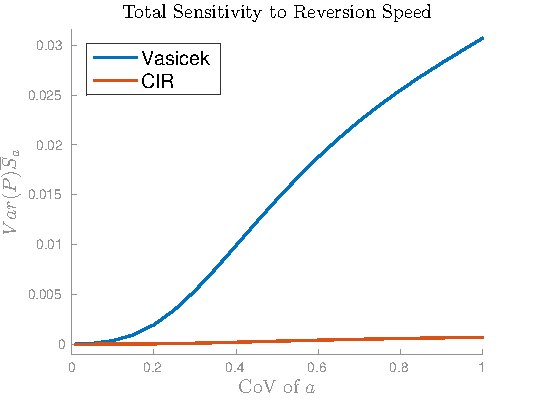
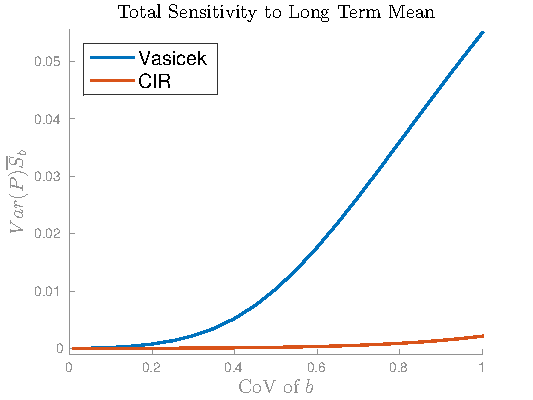
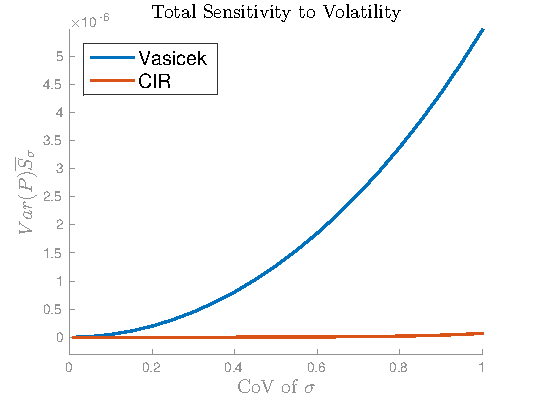
Model Variances as Functions of Parameter Uncertainty
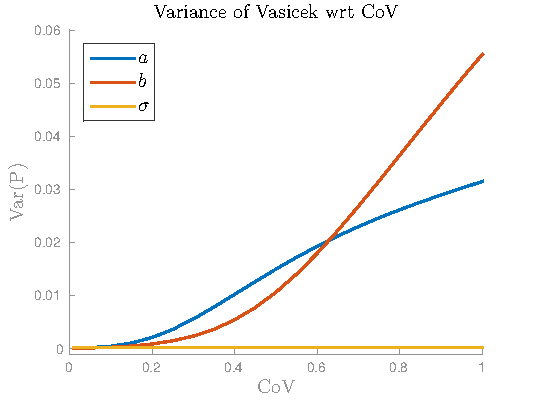
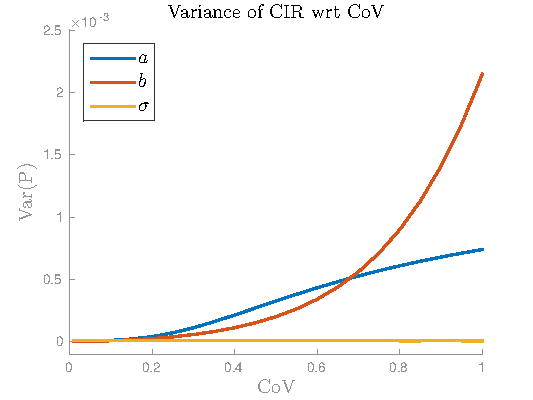
Conclusions and Future Work
- CIR more robust than Vasicek
- Narrow in scope - depends on calibration method and data
- Dependence of parameters - ANOVA assumes independence
- Formulate sensitivity indices so uncertainty in parameters is input